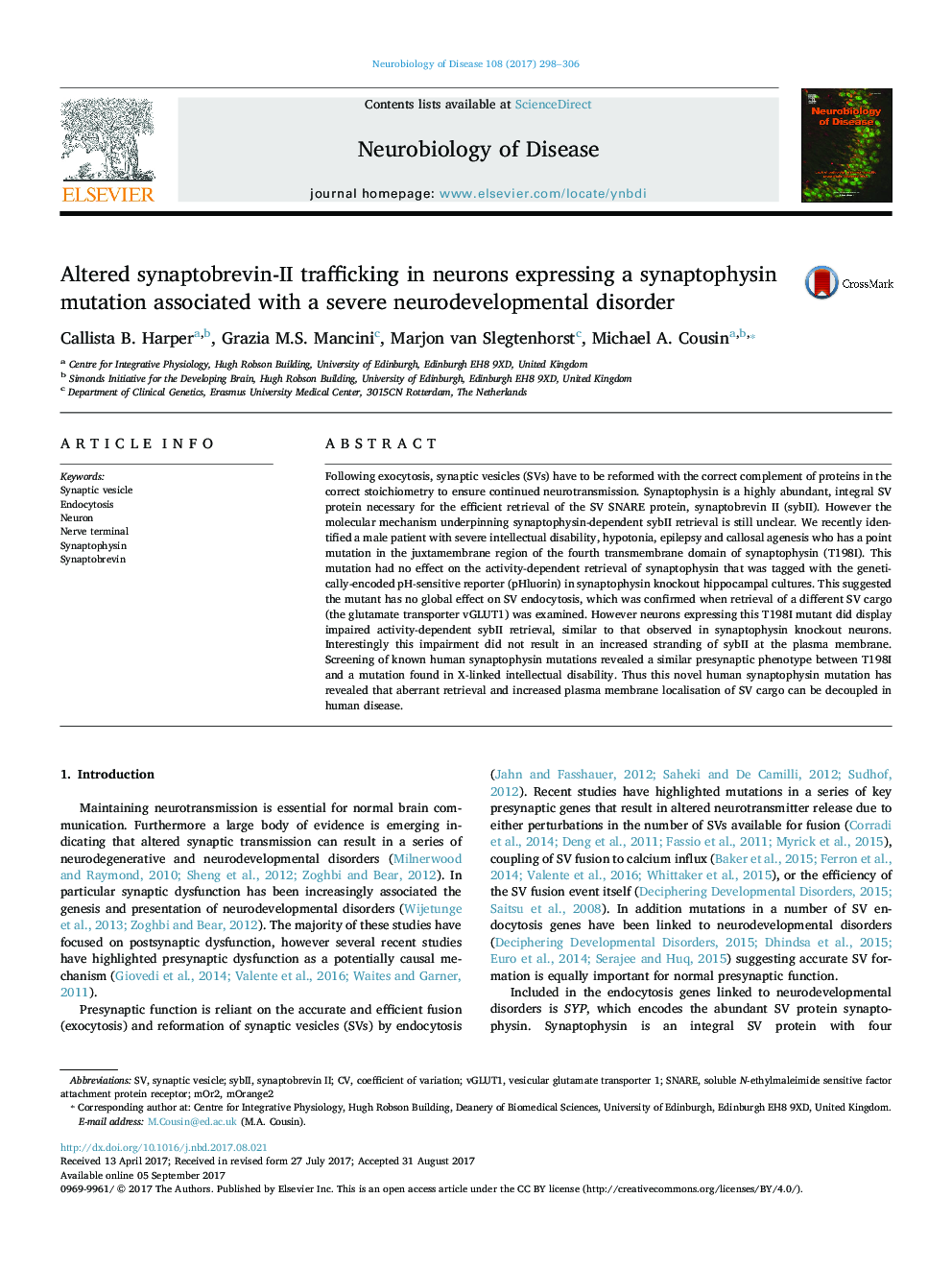| Article ID | Journal | Published Year | Pages | File Type |
|---|---|---|---|---|
| 5630543 | Neurobiology of Disease | 2017 | 9 Pages |
â¢A novel synaptophysin variant has been identified in human disease.â¢The mutation selectively perturbs activity-dependent synaptobrevin II retrieval.â¢It reveals plasma membrane expression can be decoupled from vesicle cargo retrieval.
Following exocytosis, synaptic vesicles (SVs) have to be reformed with the correct complement of proteins in the correct stoichiometry to ensure continued neurotransmission. Synaptophysin is a highly abundant, integral SV protein necessary for the efficient retrieval of the SV SNARE protein, synaptobrevin II (sybII). However the molecular mechanism underpinning synaptophysin-dependent sybII retrieval is still unclear. We recently identified a male patient with severe intellectual disability, hypotonia, epilepsy and callosal agenesis who has a point mutation in the juxtamembrane region of the fourth transmembrane domain of synaptophysin (T198I). This mutation had no effect on the activity-dependent retrieval of synaptophysin that was tagged with the genetically-encoded pH-sensitive reporter (pHluorin) in synaptophysin knockout hippocampal cultures. This suggested the mutant has no global effect on SV endocytosis, which was confirmed when retrieval of a different SV cargo (the glutamate transporter vGLUT1) was examined. However neurons expressing this T198I mutant did display impaired activity-dependent sybII retrieval, similar to that observed in synaptophysin knockout neurons. Interestingly this impairment did not result in an increased stranding of sybII at the plasma membrane. Screening of known human synaptophysin mutations revealed a similar presynaptic phenotype between T198I and a mutation found in X-linked intellectual disability. Thus this novel human synaptophysin mutation has revealed that aberrant retrieval and increased plasma membrane localisation of SV cargo can be decoupled in human disease.
Graphical abstractDownload high-res image (360KB)Download full-size image
